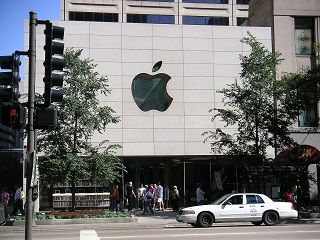From Guest Blogger Audrey Clark: What We Can Learn About Solar Tech From Big Business

What Makes Apple Shine
Apple’s first and primary focus is figuring out what consumers want and making it better than the original concept. This philosophy comes from Steve Jobs’ approach to running Apple. He was as much interested in aesthetic design as he was in the science of function, according to Smithsonian Magazine. The latest manifestations in the killer hybrid of design and function are being seen in Apple’s move towards a solar glass lens, for example. With a wafer thin layering, the design may be embedded in the next Apple iPhone evolution, incorporating solar power collection in the phone in addition to a better glass layer, says Greentech Media. This functional and improved design is what’s going to continue to sell Apple phones while making solar tech a natural part of the phone instead of a foreign new feature addition. Forget needing a phone battery replacement after a year or two; the Apple solar screen will generate the power charge, according to Wall St. Cheat Sheet.
Going Self-Sufficient
On the power grid side of things, Apple has definitely taken the path of self-sufficiency, powering its iPhone databases and iCloud with Apple-designed solar farms. These farms, however, are not clunky solar panel arrays prebuilt in India. Instead, they incorporate Apple’s structure and planning that, according to RSI, captures a 100 percent energy return, balancing out the company’s database needs to keep servers running with optimum power. When Apple links its farms together for a combined power effect, the results are completely independent from the support of the normal electrical grid. In essence, Apple has created a real time example of how a company becomes self-sufficient with solar tech.
Getting Political About Solar
Finally, Apple has been quietly positioning itself with the federal government and state governments to create and establish solar tech friendly legislation and proposals, according to Sapphire Energy. This active lobbying is shaping the regulatory environment to work in the company’s favor, generally establishing the industry ground rules for years to come, particularly in favor of what Apple would like to see. While that concept may seem disconcerting, it’s no different than what any other industry does in Washington D.C., and it has plenty of opponents from traditional power who want to keep electricity dependence right where it is. That said, change happens at all levels, and anyone forgetting about the regulatory side often finds himself outmaneuvered by those who take advantage of changing the business game rules via politics.
There is no question that Apple’s latest forays can teach solar tech businesses a thing or two about how to monetize and boost the solar market in their favor. Apple’s foresight continues to outpace competitors, even those who should be on par and beating Apple in terms of market share.
